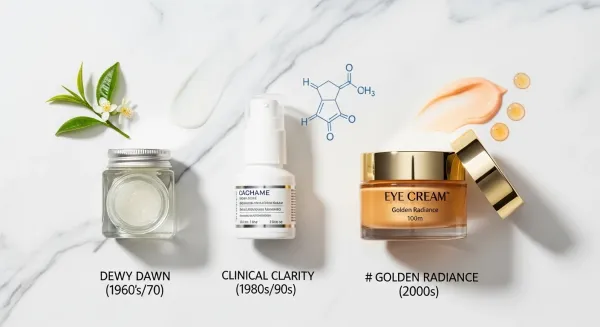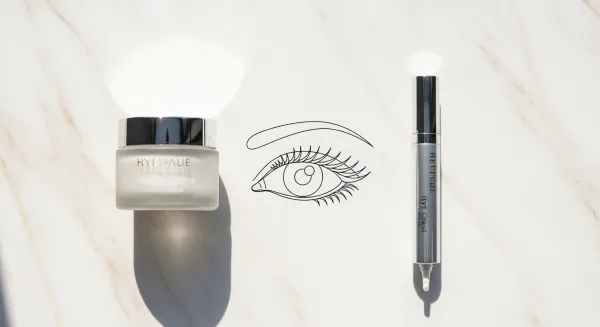Retinol for Eyes: How to Use It Safely Without Irritation
Stop eye irritation from retinol! Our dermatologist-approved guide shows you how to safely apply eye cream for wrinkles, with a step-by-step protocol.
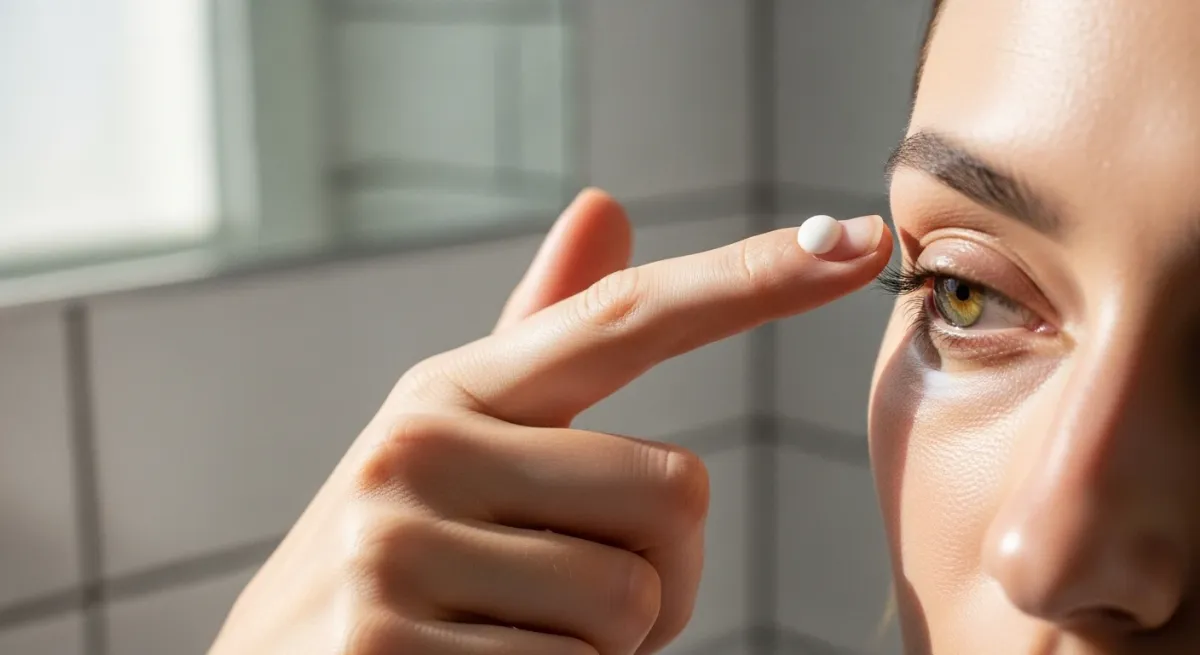
Retinol for Eyes: How to Use It Safely Without Irritation (The Complete Protocol)
If you've ever wondered whether retinol for eyes is worth the hype—or more importantly, how to use it safely without irritation—you're in the right place. This isn't your typical "start slow and hope for the best" guide. We're going deeper into the exact protocol dermatologists use with their own patients, plus the advanced strategies most articles skip entirely.
Here's the truth: the skin around your eyes is about 40% thinner than the rest of your face. It has fewer oil glands, less collagen support, and basically zero margin for error. That's why throwing your regular face retinol near your eyes is like bringing a sledgehammer to a jewelry repair job. It'll work, but you'll destroy everything in the process.
But when done correctly? Retinol for the eye area is genuinely one of the most powerful tools you have for reducing fine lines, improving skin texture, and building long-term collagen. The key is knowing the system.
Why Your Eyes Need a Different Retinol Strategy
Let's start with what makes the eye area so uniquely challenging.
According to the American Academy of Dermatology, the periorbital skin (fancy term for "around your eyes") is not only thinner but also more prone to moisture loss and environmental damage.
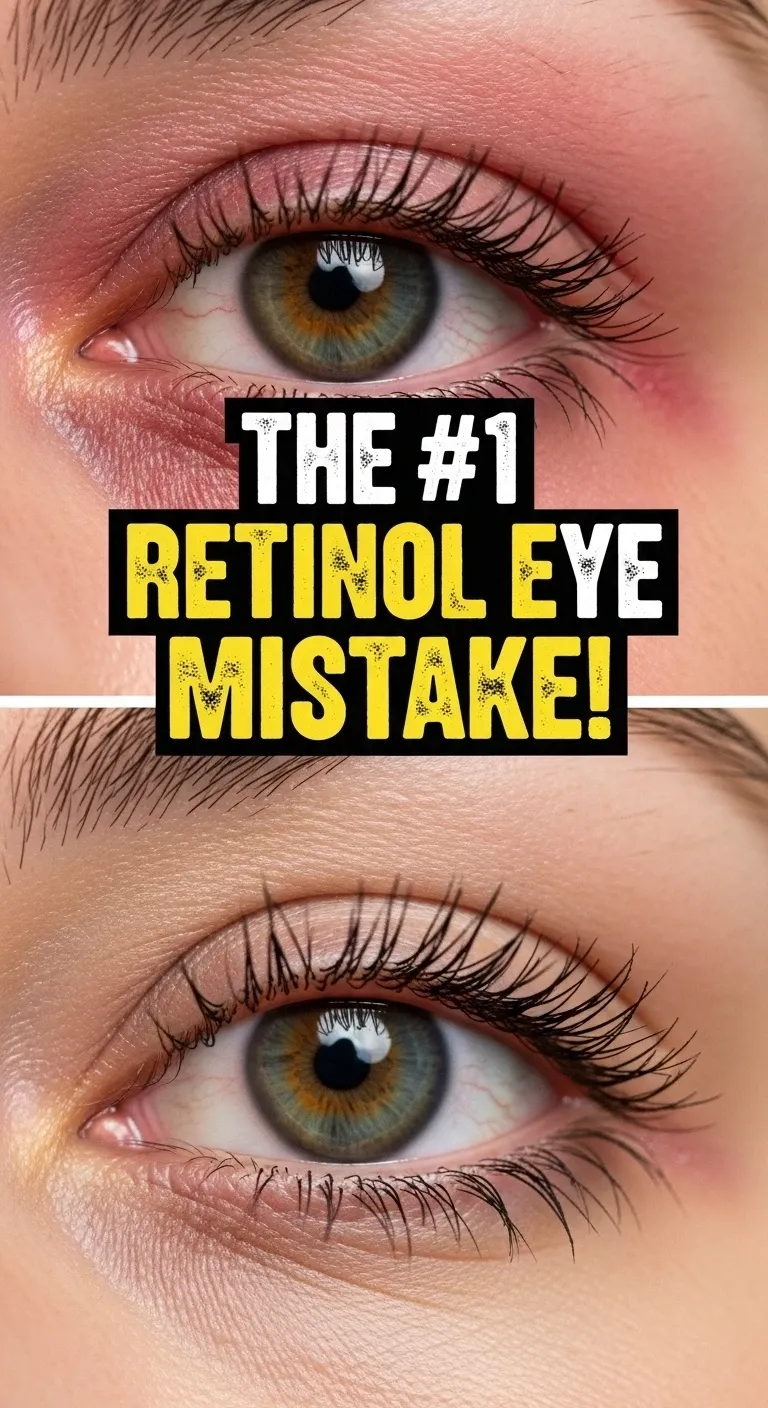
Think of it this way: your cheeks are a fortress. Your under-eyes are a screen door. Same weather, completely different protection levels.
This is why the "just use less of your face retinol" advice fails spectacularly. The concentration that works beautifully on your forehead will leave your under-eyes red, flaky, and looking worse than when you started.
You need a product specifically formulated for this delicate zone—with lower percentages, stabilizing ingredients, and built-in buffers.
The Retinoid Ladder for Eyes (Choose Your Starting Point)
Not all retinoids are created equal, especially for sensitive areas. Here's your decision tree:
| Retinoid Type | Strength Level | Best For | Conversion Steps to Retinoic Acid |
|---|---|---|---|
| Retinyl Palmitate | Gentlest | First-timers, ultra-sensitive skin, reactive skin conditions | 3 steps |
| Retinol | Moderate | Most people starting out | 2 steps |
| Retinaldehyde (Retinal) | Strong | Experienced users, impatient people who want faster results | 1 step |
| Granactive Retinoid (HPR) | Low-irritation alternative | Sensitive skin that failed with retinol | Direct activity, no conversion needed |
Start here: If you've never used retinol anywhere on your face, begin with retinyl palmitate or a 0.01% retinol eye cream. If you're already using retinol on your face successfully, you can start with 0.03-0.05% for eyes.
The hidden gem? Retinal. It's one conversion step closer to the active form your skin actually uses, which means it works faster than retinol but tends to irritate less than prescription-strength retinoids.
Cleveland Clinic research confirms that the closer a retinoid is to retinoic acid, the more efficiently it works—but formulation matters just as much as the ingredient itself.
The Skin Barrier First Protocol (Your 8-Week Game Plan)
Forget everything you've heard about "ease into it slowly." That's not a protocol—that's a suggestion. Here's the actual system:
Phase 1: Foundation Building (Weeks 1-2)
Goal: Strengthen your moisture barrier so it can handle what's coming.
- Apply your regular hydrating eye cream every single night for two weeks
- Look for ingredients like ceramides, hyaluronic acid, squalane, and niacinamide
- Skip any active ingredients (no vitamin C, no AHAs, no other exfoliants)
- Use SPF 30+ every morning without exception
Why this matters: You're essentially building a protective cushion before introducing a powerful active. Think of it like strength training—you don't start with your max weight on day one.
Phase 2: Introduction (Weeks 3-4)
Frequency: Monday nights only
The Moisture Sandwich Technique:
- Cleanse and pat dry
- Apply a thin layer of your barrier-supporting eye cream
- Wait 5-10 minutes until completely dry
- Apply a pea-sized amount (for BOTH eyes) of retinol to the orbital bone
- Wait another 5 minutes
- Seal with a final layer of moisturizing eye cream
The Safe Zone (Critical):
- Apply only to the orbital bone—that's the bony ridge you can feel around your eye socket
- Stay at least 5mm away from your lash line
- Avoid the inner corners of your eyes
- Never apply to eyelids or directly under the eye
The product will naturally migrate slightly during the night. You're giving it room to move without hitting the super-sensitive areas.
Phase 3: Building Tolerance (Weeks 5-6)
Frequency: Monday and Thursday nights
Use the same moisture sandwich technique. If you experience any redness, flaking, or discomfort, drop back to once weekly.
According to Johns Hopkins Medicine, the most common mistake people make with retinoids is pushing through irritation instead of respecting their skin's feedback.
What's normal vs. what's a red flag:
Normal (Retinization):
- Slight dryness
- Mild flaking that responds to moisturizer
- Temporary tightness
- Skin that looks slightly "shiny" or feels smoother
Red Flags (Barrier Damage):
- Burning sensation
- Deep, painful cracks
- Persistent redness that doesn't calm down
- Increased sensitivity to other products
- Raw, weeping skin
If you hit any red flags, stop immediately and focus on barrier repair for 1-2 weeks before trying again at a lower frequency.
Phase 4: Maintenance (Weeks 7-8 and Beyond)
Frequency: 3 nights per week (Mon/Wed/Fri or every other night)
Once you've successfully built up tolerance, most people find that 3-4 times weekly is the sweet spot for maintaining results without irritation. You can continue with the moisture sandwich indefinitely, or if your skin is handling it well, you can try applying retinol directly (still on the orbital bone only).
Long-term strategy: After 6 months of consistent use, assess your results. If you've plateaued, you have two options:
- Increase frequency to nightly use (if tolerated)
- Graduate to a slightly higher concentration or move up the retinoid ladder to retinal
Advanced Strategies Most Articles Skip
For Different Skin Concerns
Dark Circles: Here's what nobody tells you—retinol only helps with dark circles caused by thin skin revealing the blood vessels underneath. It does this by stimulating collagen production, which thickens the skin over time.
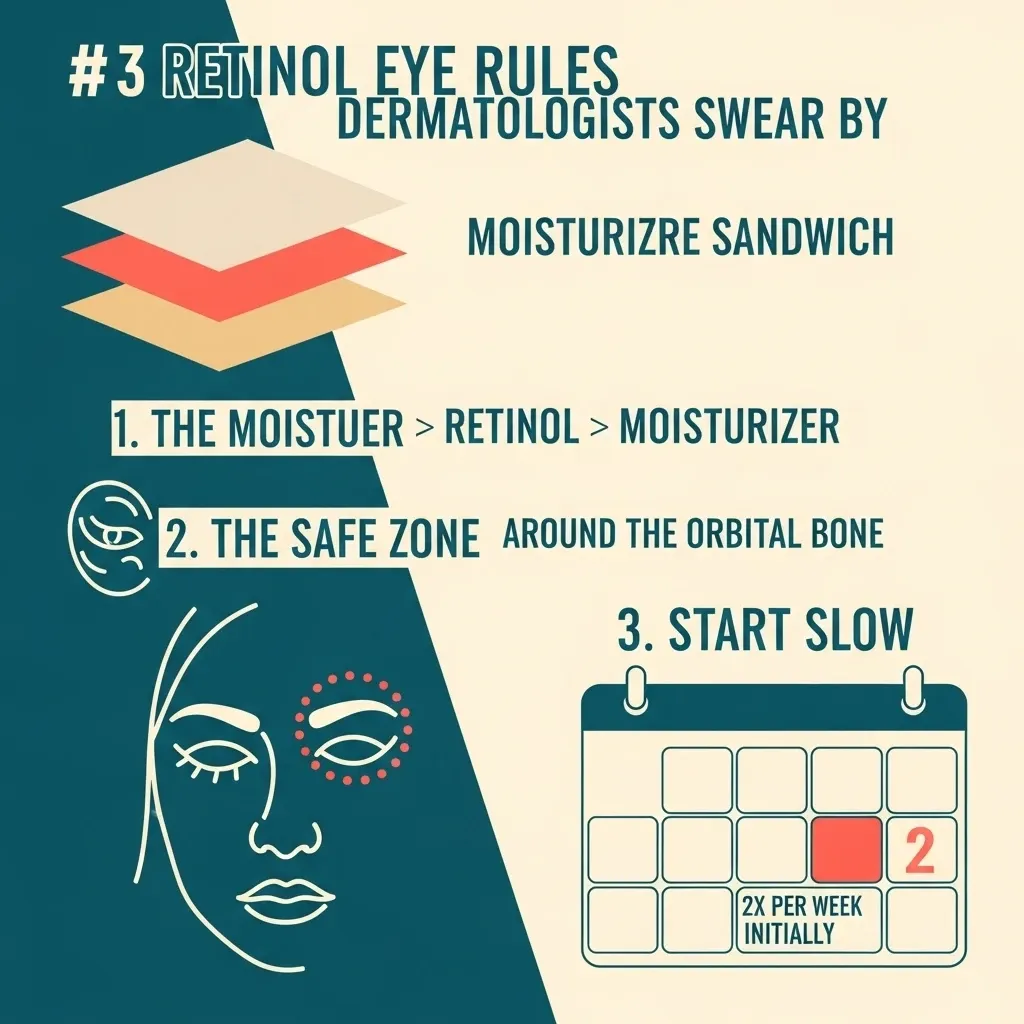
It will NOT help with dark circles caused by hyperpigmentation (genetic melanin deposits) or shadows from facial structure. For those, you need targeted dark circle treatments like vitamin C, caffeine, or even filler consultations.
Crow's Feet: This is where retinol shines brightest. Apply your product extending slightly onto the outer corner area (still on the bone), and consider pairing with a peptide serum on alternating nights.
Milia (Those Tiny White Bumps): Counterintuitively, retinol can actually help prevent milia by increasing cell turnover and preventing keratin from getting trapped. However, if you're using heavy, occlusive creams in your moisture sandwich, you could be making them worse. Switch to a lightweight gel moisturizer if milia is an issue.
The Rotation System for Advanced Users
Once you're experienced with retinol, create a rotating schedule:
- Monday: Retinol night (with moisture sandwich)
- Tuesday: Recovery night with ceramides and peptides
- Wednesday: Retinol night
- Thursday: Recovery night
- Friday: Retinol night
- Weekend: Deep hydration with overnight masks
This prevents your skin from adapting too quickly while maintaining consistent results.
Ingredients to Never Mix (Same Night)
- AHA/BHA exfoliants (glycolic acid, salicylic acid) + Retinol = Irritation overload
- Vitamin C + Retinol = Potential instability and irritation (use C in AM, retinol in PM)
- Benzoyl peroxide + Retinol = Deactivates the retinol
You can use these ingredients in your routine—just not in the same application or on the same night.
When Retinol Isn't the Answer (Plan B Options)
Real talk: some people's eyes simply cannot tolerate retinoids, no matter how carefully they're introduced. If you've tried multiple products, followed the protocol perfectly, and still experience persistent irritation, here are your gentler alternatives that still deliver anti-aging results:
Bakuchiol: The plant-based retinol alternative that's been getting serious attention in research. It provides similar collagen-boosting benefits without the irritation. Perfect for sensitive skin around the eyes.
Peptide Complexes: Look for Matrixyl 3000, Argireline, or copper peptides. They won't be as dramatic as retinol, but they're significantly gentler and still stimulate collagen production over time.
Vitamin C (L-Ascorbic Acid): While it works differently than retinol, vitamin C is a proven collagen booster and brightening agent. Use it in the morning under your SPF.
Growth Factors: Found in products like TNS Eye Repair, these signal your skin to produce more collagen without the retinization process.
Your Complete Routine on Retinol Night
PM Routine:
- Cleanse with a gentle, non-stripping cleanser
- Tone (optional, skip if skin feels tight)
- First layer moisturizer on eye area only
- Wait 5-10 minutes
- Apply face serums (avoid eye area)
- Apply retinol eye product to orbital bone
- Wait 5 minutes
- Face moisturizer on entire face except eyes
- Second layer eye moisturizer to seal everything
AM Routine:
- Gentle cleanse
- Hydrating eye cream (no actives)
- Antioxidant serum on face (vitamin C is ideal)
- Moisturizer
- SPF 30+ minimum (non-negotiable when using retinol)
According to Healthline's comprehensive guide, the most critical step people skip is adequate sun protection. Retinol increases photosensitivity, meaning your skin is more vulnerable to UV damage. Skip the SPF, and you're literally undoing all the collagen-building work your retinol is doing at night.
The Timeline: What to Actually Expect
Weeks 1-2: Nothing visible. You might feel slight dryness. This is your skin adjusting.
Weeks 3-4: Light flaking is common. Your skin is turning over faster. This is actually a good sign (assuming it's not painful or excessive).
Weeks 5-8: Flaking should subside. You might notice skin feels smoother, but no dramatic changes yet.
Weeks 9-12: This is when people typically see the first real improvements—fine lines look softer, skin appears brighter and more even.
Months 4-6: Maximum results. Deeper lines improve, skin texture is noticeably refined, and the under-eye area looks more youthful.
The biggest mistake? Quitting during the "ugly phase" (weeks 2-4) when your skin is adjusting. Push through with proper hydration and you'll be rewarded.
Premium Product Investment
For those ready to invest in results, the Murad Retinol Youth Renewal Eye Serum represents the gold standard in eye retinol formulations. What justifies the premium price?
Murad's proprietary Retinol Tri-Active Technology combines three forms of retinoids for maximum efficacy with minimized irritation—exactly what the delicate eye area needs.
👉 Search Murad Retinol Youth Renewal Eye Serum on Amazon
Affiliate Disclaimer: This post may contain affiliate links, which means I may receive a small commission if you make a purchase through my links, at no extra cost to you. I only recommend products I genuinely believe in and would use myself. Your support helps keep this blog running and allows me to continue creating free content to help you achieve your best skin. Thank you for supporting SkinOptimizer!
FAQ: Your Burning Questions Answered
Can I use my face retinol around my eyes?
+No, and here's why: face retinol products typically contain concentrations between 0.3-1%, which is too strong for the thin, delicate skin around your eyes. Eye-specific retinol products are formulated with lower concentrations (0.01-0.1%), plus additional soothing and hydrating ingredients to buffer potential irritation. Using face retinol near your eyes is the #1 cause of persistent irritation that makes people give up on retinoids entirely. Invest in a proper eye product—your results and comfort will be worth it.
How long before I see results from retinol eye cream?
+Realistic timeline: 8-12 weeks for visible improvements in fine lines and texture. You might notice smoother skin around week 6, but the real transformation happens at the 3-month mark when collagen production has ramped up. If you're not seeing ANY changes by week 16, either your concentration is too low, your frequency is too infrequent, or you might need to move up the retinoid ladder to retinal for faster conversion. Remember: retinol is a marathon investment, not a sprint solution.
What should I do if my eyes get irritated from retinol?
+Immediately stop using the retinol and focus on barrier repair for 1-2 weeks. Use only gentle, fragrance-free moisturizers with ceramides, hyaluronic acid, and squalane. Apply [best moisturizers for dry skin] morning and night. Avoid all other actives—no vitamin C, no exfoliants, nothing. Once the irritation completely resolves, restart with a lower concentration, less frequent application (once weekly), and always use the moisture sandwich method. If irritation returns even with these precautions, retinol may not be right for your eye area—switch to gentler alternatives like bakuchiol or peptides.
Can I use retinol for eyes if I have eczema or rosacea?
+Proceed with extreme caution and medical guidance. If you have active eczema or rosacea flares around your eyes, wait until your skin is completely calm before introducing retinol. When you do start, choose the gentlest option (retinyl palmitate), use the moisture sandwich method religiously, and start with once every 7-10 days. Many people with reactive skin conditions find more success with [skincare routine for redness and rosacea] alternatives like azelaic acid or niacinamide, which provide anti-aging benefits without triggering inflammation. Always consult your dermatologist first.
Should I use retinol eye cream in the morning or at night?
+Always at night. Retinol breaks down in UV light, making it ineffective and increasing your risk of sun damage. Your nighttime application allows the ingredient to work while your skin is in repair mode (which naturally happens while you sleep). In the morning, focus on [antioxidant protection] and sunscreen. This AM/PM strategy maximizes retinol's effectiveness while protecting your skin during vulnerable daylight hours. There are no exceptions to this rule—retinol is a PM-only ingredient.
The Bottom Line
Retinol for eyes isn't complicated—it's just specific. The difference between getting incredible results and giving up in frustration comes down to three things:
- Choosing the right concentration for your experience level
- Following the moisture sandwich protocol religiously during the introduction phase
- Giving it enough time (minimum 12 weeks) before judging results
You now have the exact system dermatologists use. No guessing, no hoping, no quitting when it gets uncomfortable. Just a proven protocol that respects your skin's biology while pushing it toward real, visible improvement.
Start tonight. Your future skin is counting on it.


